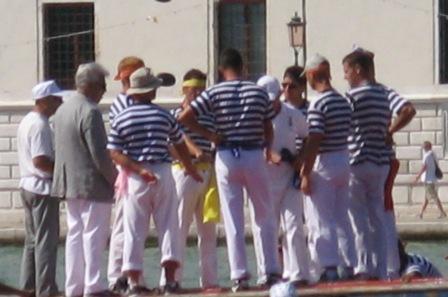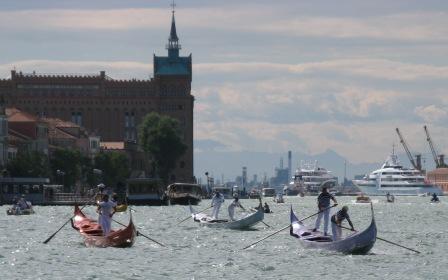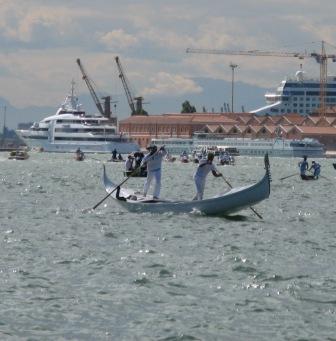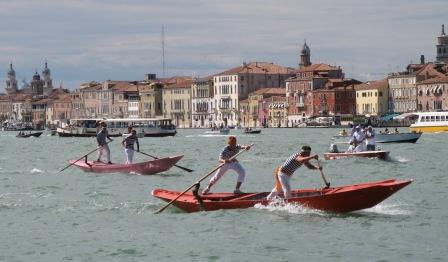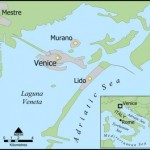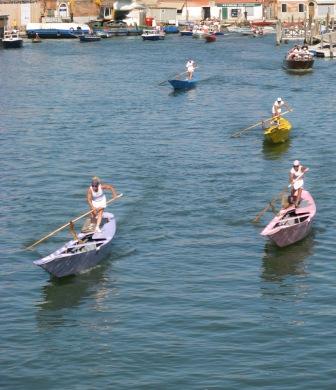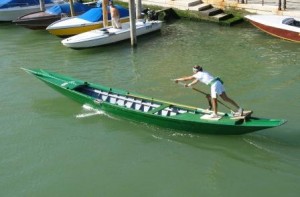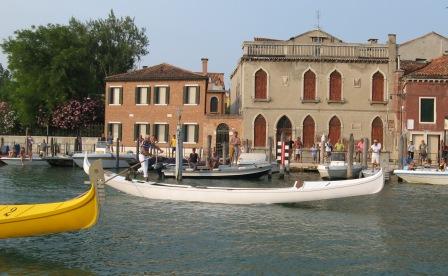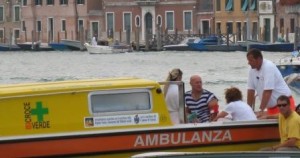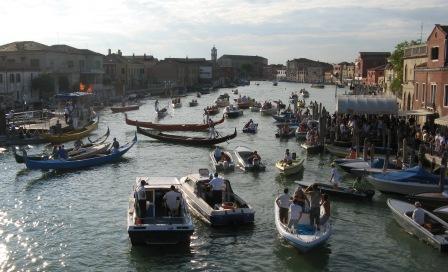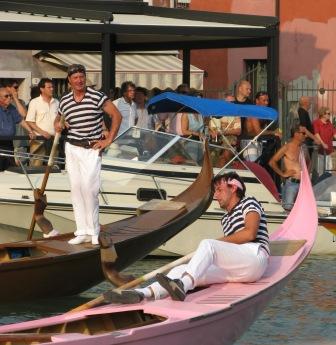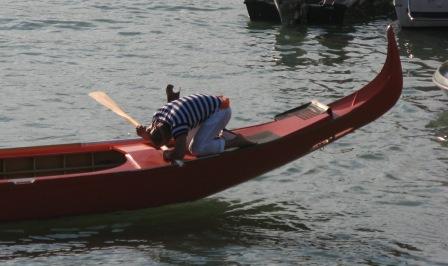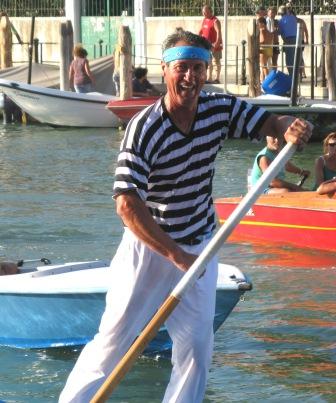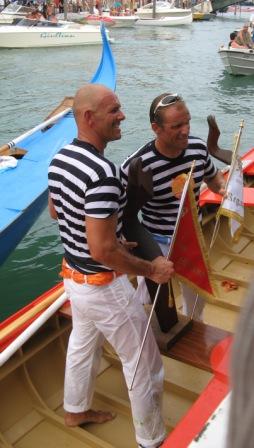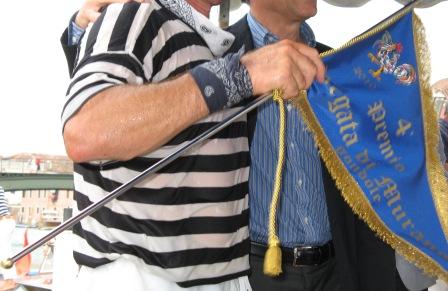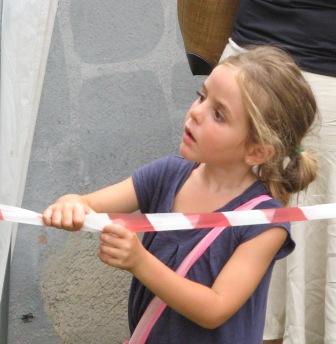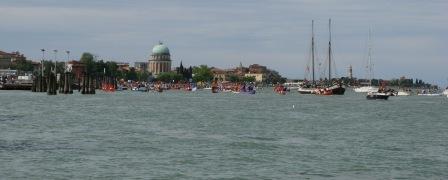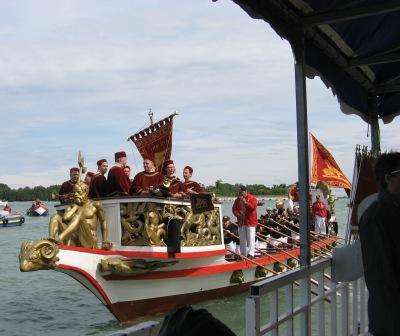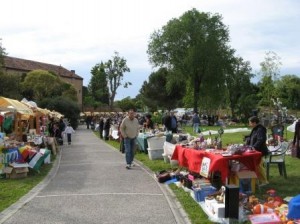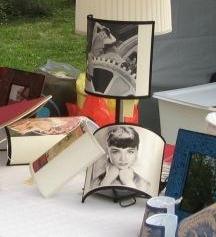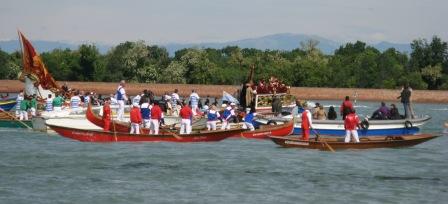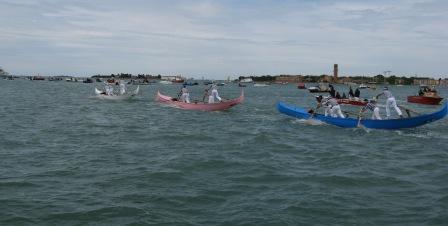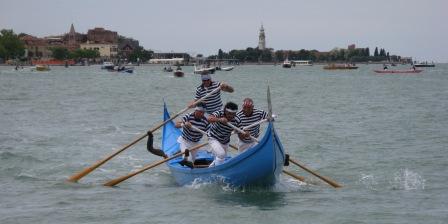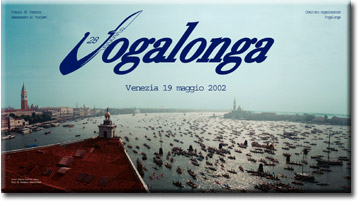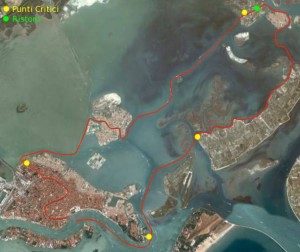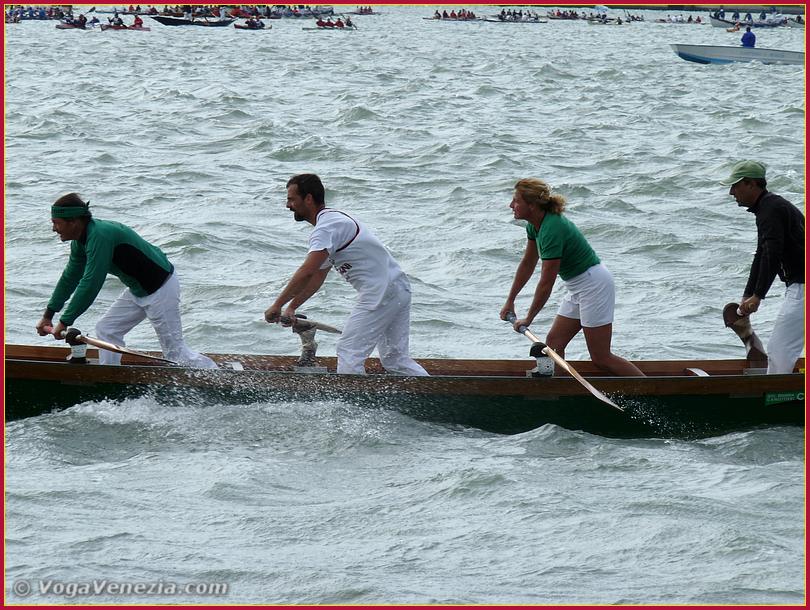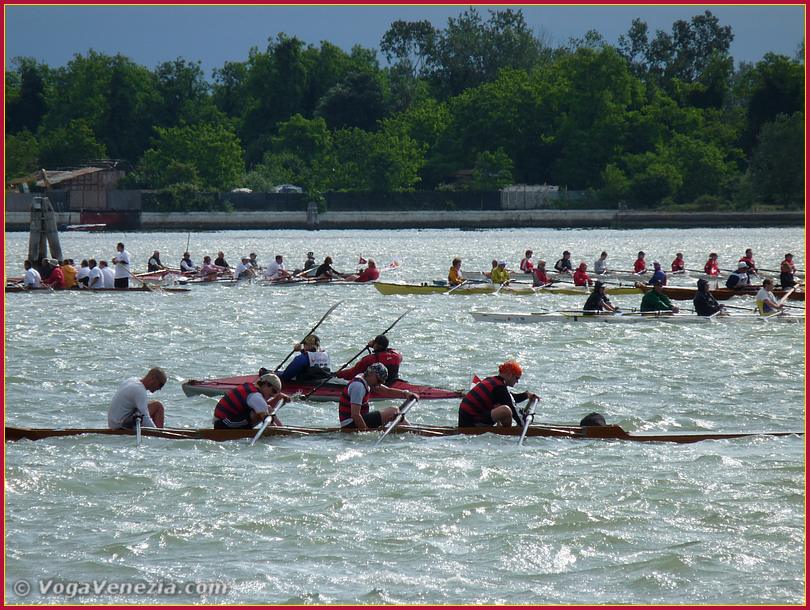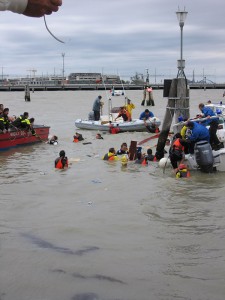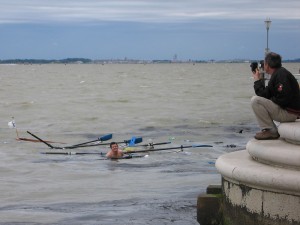This past weekend we reached the summer’s festive culmination, the Feast of the Redeemer. But this year the routine was slightly different: No boat, no fireworks. Sounds like heresy, I know. It is heresy. I might as well just call it a club cookout and forget all the historical/traditional frippery.
Things have changed because now we’re in a different rowing club, and in a different place altogether in our minds and spirits. And while we could certainly take a boat and load it up with the usual bovoleti, watermelon, sarde in saor, pasta e fagioli, and all the other traditional noshes to get you from sundown to the fireworks, we just don’t feel like it.
One main reason we — and several other old Venetians I asked at random — don’t feel like going in a boat anymore is because of all the other boats. It’s one thing to be crushed amid swarming hordes of people ashore, it’s quite another to find yourself in the dark with thousands of large motorboats operated by people who are drunk and who don’t know how to drive. Obviously, this was not a problem when Lino and his cohort were growing up. It’s pretty hard to hurt anybody with a wooden rowing boat, at least not to the degree a big boat powered by 90 or 140 or more horses.
In fact — not to cast a pall over what I intend to be a jaunty little post — two young women who were aboard a motorboat zooming back to Chioggia after the fireworks have not yet made it home. Because the boat ran into a piling at high speed — just about every motorboat leaving Venice was going from fast to pretty fast to crazy fast — and one woman hit her head against the other woman’s head. The first woman lingered about a day, and is now in heaven. The other woman, who had snagged a ride home with them just on an impulse, is in the hospital recovering from various fractures. As for the driver/owner/ friends who were aboard, I don’t know what state they’re in, but two of the boys/men/whatever have fled. I tell you this only to indicate that I am not inventing notions about how dangerous it is out there. What surprises me is that disaster struck so few. Not much comfort to the families of all involved.
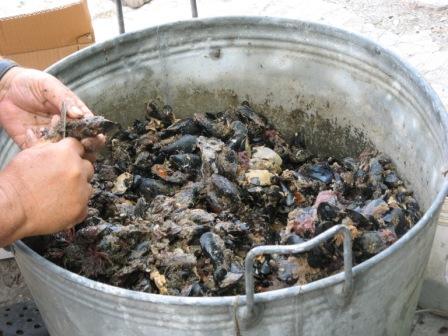
So Friday morning (Saturday night being the high point), Lino and I went to the club to help clean the mussels. A vast feast — probably more Rabelaisian than Lucullan — was planned, and our contribution was to do some of the prep work. Little did I know what ten tons of extremely wild mussels will do to your hands.

Forget how they look, in their just-scraped-off-the-pilings dishabille. They’re ghastly, I agree. Even I gave some serious thought to striking mussels off my must-eat list for, like, forever. But the ones we took home, all clean and shiny, were absolutely delectable. So you know, don’t judge a mussel by its encrustations.
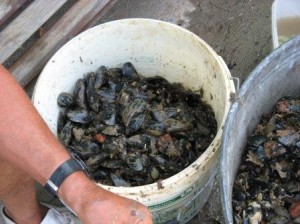
After spending hours pulling and scraping off plant and all sorts of other matter, not to mention rending them from each other one by one, my hands felt as if I’d been pulling nettles. Three days later, a few fingers were still a little red and swollen. Now I understand why one of the men put on rubber gloves. I live, I learn.
A certain number of men got to cooking. There were great things to eat but there was also fifty times more than anyone could ever consume. Fried shrimp and deep-fried fresh zucchini and sarde in saor, the aforementioned mussels, grilled pork ribs and sausage and lamb chops and fresh tomatoes out of the garden in the back, and — I begin to lose the thread here — there was also something I’d never even heard of, much less tasted: deep-fried sage leaves. You can have your fried zucchini blossoms, I’m going to take the sage any chance I get.
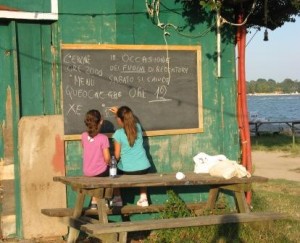
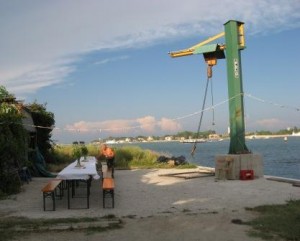
After that the sheer quantity began to press down on my brain — I know I ate many more things, but I can’t remember what. At a certain point one of the wives pulled out a homemade frozen dessert called zuccotto. The recipe I looked up here makes it sound elegant, but what we ate were pieces that seemed to have been hacked off the Ur-zuccotto with a dull cleaver. And of course there was watermelon, which is utterly non-negotiable. You can skip a whole batch of things, but yes, there will be watermelon.
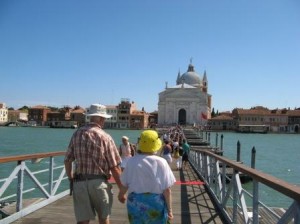
We watched the fireworks from afar, enjoying the highest ones and intuiting the lower ones by the shimmering glow through the treetops. It was more comfortable than sitting in a boat right under them, but much less exciting. I don’t see the point in fireworks if the’re not going to be exciting. You might as well watch them on TV, or through the wrong end of a telescope, and wear earmuffs.
After the fireworks – or as they put it, “pyrotechnic display” — the countless motorboats began to stream homeward. The paper estimated that some 110,000 people came to party, but didn’t hazard a guess as to how many boats. There were so many they were tying up to public lighting stanchions, not at all a good idea.
We all sat there, sticky with watermelon juice, watching the migration. It was like the wildebeest at high speed, with big roaring mechanical voices, each with a little red light gleaming from its left flank.
Next day: The races. Now they were exciting. Lots of wind, lots of tension, lots of — unfortunately — waves. Something is going to have to be done, the racers can hardly row anymore. But that’s a subject for another day.
For those who are interested in a few more statistics, the spectacle (fireworks, etc.) cost about 100,000 euros. Doesn’t sound like much, I know — actually, I had the impression that the show was shorter than some other years.
